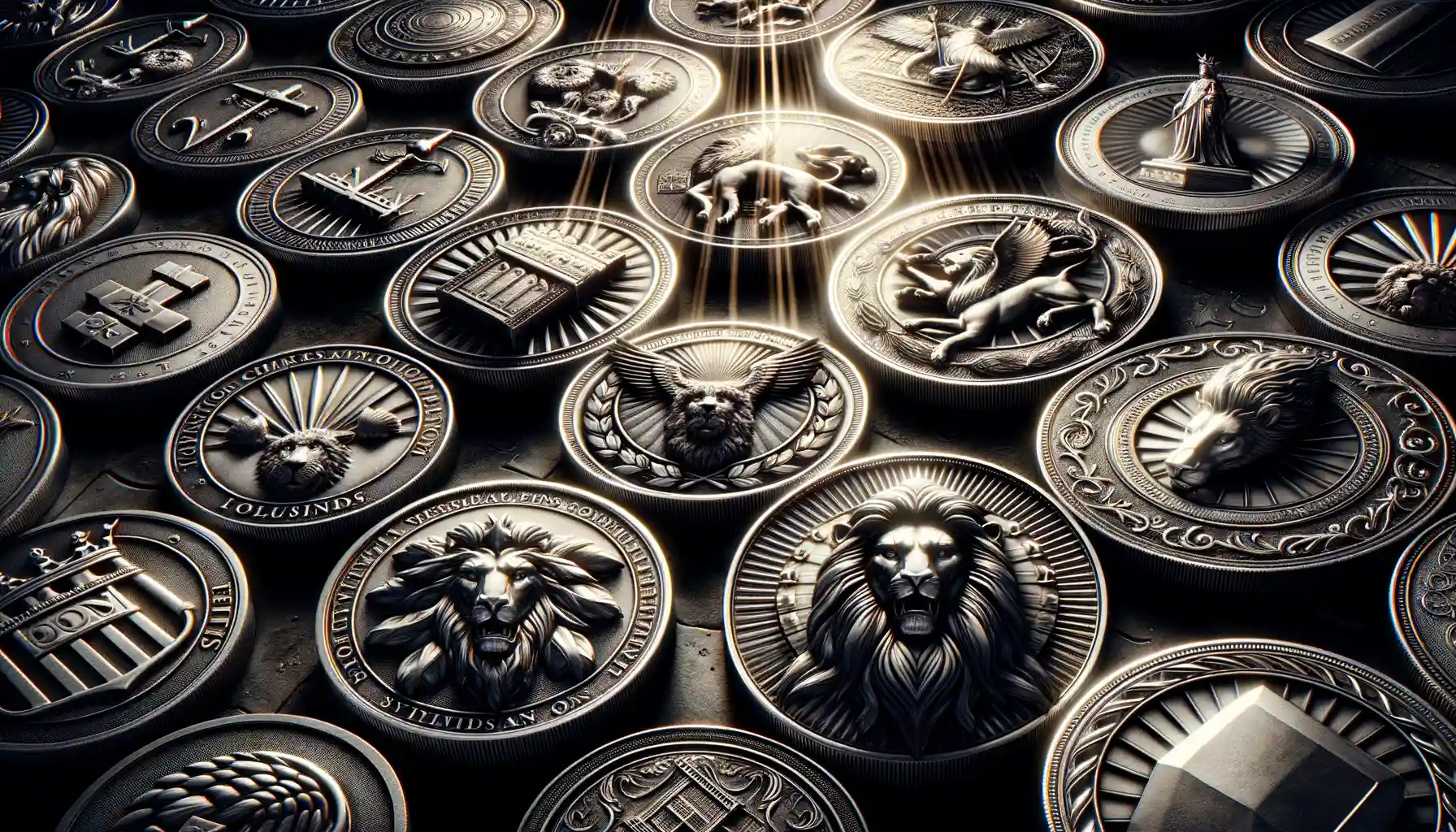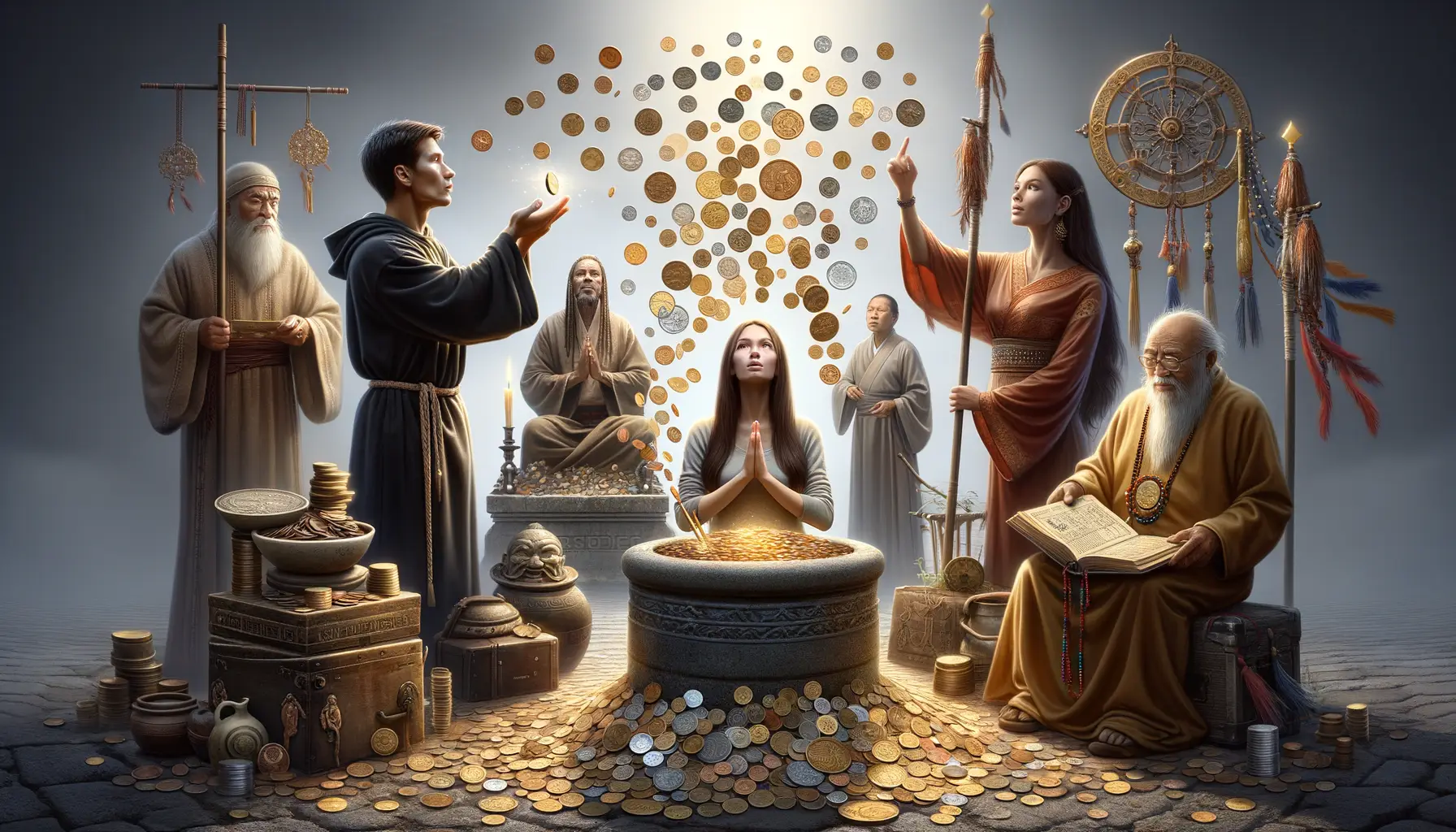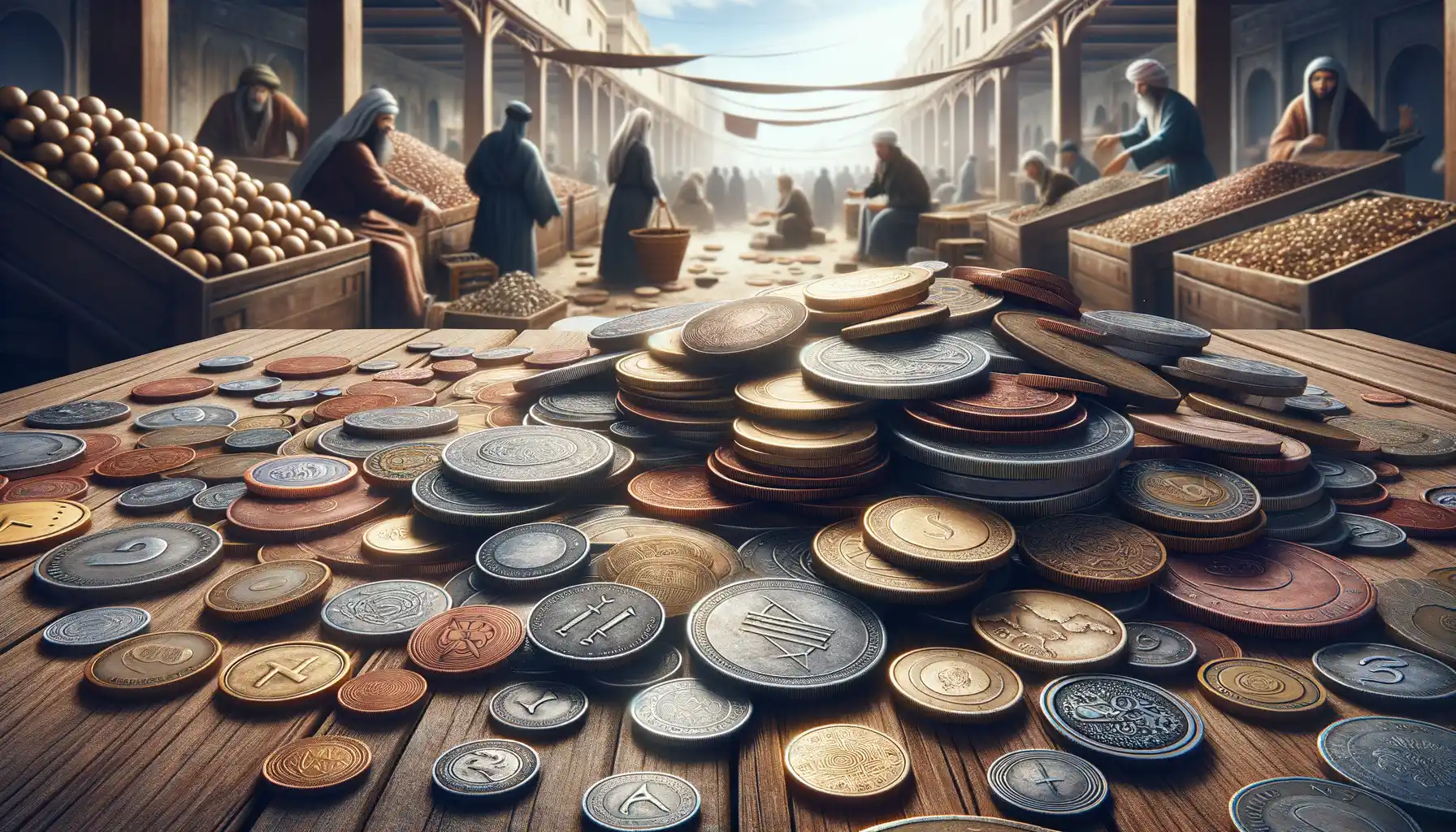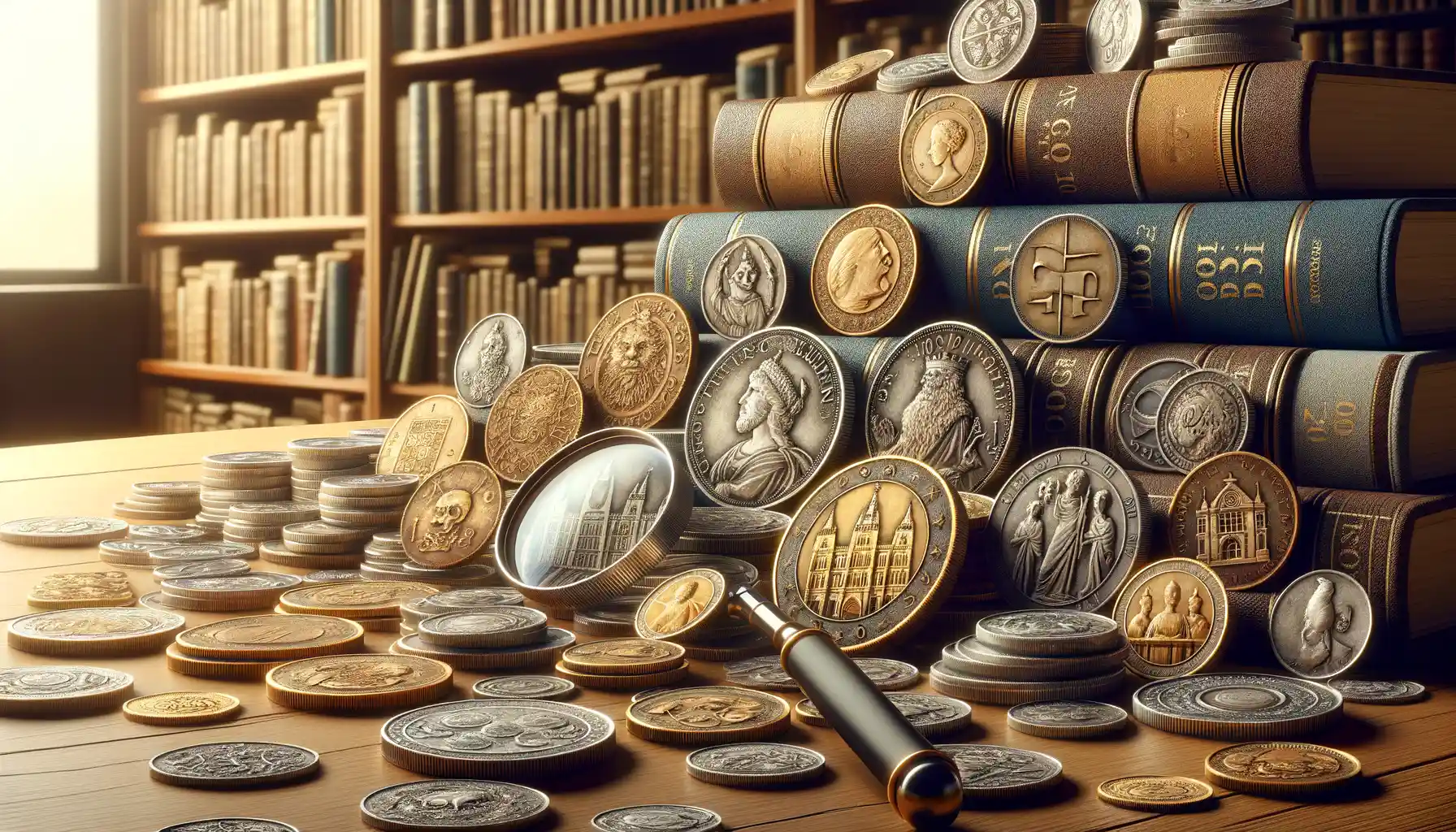Historical Evolution of Coins Across Cultures
Tracing the Spark of Coinage: From Barter to Brilliance
Imagine a world where daily trade revolved around livestock, grains, or shiny shells. This was reality before coins wove their magic into human culture. The first coins emerged as shimmering promises of value in ancient Lydia (modern-day Turkey) around 600 BCE. Made from a natural mix of gold and silver—electrum—these early coins weren’t just currency; they were revolutionary, simplifying chaotic barter systems.
But here’s where it gets fascinating: each culture left its distinct fingerprint on coinage over centuries. The Greeks? They transformed coins into miniature art galleries adorned with gods like Athena or cultural icons like the owl. Romans elevated the game further, creating coins that showcased emperors’ faces—bold and declarative symbols of power.
- In China, the round coins with square holes represented harmony between heaven and earth.
- India’s silver punch-marked coins were steeped in mysticism, with cryptic symbols etched into their surfaces.
Across cultures, coins reflected values, aspirations, and identities. Each piece told a story, whispering the ambitions of rulers, the spirit of a people, or even the divine forces believed to shape their universe.
Coins as Symbols of Power and Authority

The Hidden Messages Engraved in Metal
Coins have always been far more than just tools of commerce. Think of them as miniature billboards, broadcasting messages of power, prestige, and control to anyone who holds them—or even just sees them. Rulers and empires knew this well. By stamping their faces, symbols, or even military victories onto coins, they declared their supremacy in ways that were impossible to ignore.
Take the Roman Empire, for instance. What better way to remind people across a vast territory who’s in charge? A coin bearing the stern profile of Emperor Augustus wasn’t just money—it was a daily reminder of his dominion, slipping silently into every market, every purse, every hand. And the detail mattered: wreaths symbolized victory, eagles evoked divine favor, and inscriptions proclaimed titles like “Imperator” or “Pontifex Maximus.”
- In ancient Persia, King Darius used coins to show his wealth and god-given right to rule.
- Medieval European monarchs often included crosses or saints to reinforce their authority as divinely chosen leaders.
Every scratch of metal carried a message: “This is my land. These are my people. This is my legacy.”
A Stage for Political Drama and Rivalries
Coins could also spark a little drama—think propaganda campaigns centuries before posters and newspapers. In ancient Greece, rival city-states used coins to boast about their achievements or mock their enemies. Athens, for instance, proudly displayed the owl, a nod to their patron goddess Athena and their reputation for wisdom. Meanwhile, Corinth flaunted its Pegasus design, a mythical creature leaping off silver, as if to say, “Our culture soars above yours.”
Even today, you can see echoes of this tradition. National emblems on modern currency are subtle yet powerful reminders of cultural identity and sovereignty. Coins aren’t just cold, hard cash—they’re storytellers, ambassadors, and, sometimes, battlegrounds in disguise.
Religious and Spiritual Roles of Coins

Coins as Messengers Between Mortals and the Divine
From ancient temples to quiet prayer corners, coins have whispered sacred intentions across millennia. A single coin can carry a wish, a plea, a promise. Tossed into the rippling waters of a holy river or placed at the feet of a revered statue, it becomes more than metal—it transforms into a bridge between the earthly and the eternal.
Consider the shimmering offerings in fountains worldwide, each coin bearing someone’s silent hope. Or the long-standing tradition of leaving silver coins on grave markers, ensuring departed souls find peace. Coins, small yet heavy with meaning, are messengers carrying gratitude, desperation, or devotion to higher realms.
Rituals and Beliefs Driven by Coins
The spiritual role of coins weaves together faith and culture in captivating ways:
- In Hindu wedding ceremonies, gold coins symbolize blessings for prosperity and unity.
- Medieval Christians minted “pilgrim tokens”, small devotional coins carried to holy sites for protection.
- Even today, some cultures place coins under foundations of homes or inside walls—a talisman for luck and fortification.
Coins speak many languages: hope, reverence, and even superstition. They’re proof that sometimes, the smallest artifacts hold the grandest beliefs.
Coins in Trade, Economy, and Social Exchange Systems

Driving the Wheels of Ancient Economies
Coins were far more than shiny trinkets tucked into pockets; they were the lifeblood of bustling markets and thriving communities. Imagine a Mediterranean bazaar, scents of spice and citrus filling the air, merchants haggling over bolts of silk or amphorae of olive oil. What made these exchanges hum like clockwork? Coins—compact, portable, and trusted.
Unlike bartering, where a goat might be traded for grain, coins brought universal value. A single gold coin held the power to purchase not just goods, but also influence. For example, in ancient Rome, a well-dressed patrician could subtly flaunt his wealth simply by handing over a gleaming denarius. It wasn’t just commerce; it was communication.
Coins also fueled empires. They carried the weight of trade expansions with them, bridging seas and cultures. Look at medieval Europe or the Silk Road:
- Gold coins from the Islamic world became prized in Viking hoards.
- Chinese copper cash traveled as far as Japan, enriching the East Asian coasts.
These little discs were storytellers, forever linking human ambition to economic ingenuity.
Modern Cultural and Collectible Significance of Coins

Coins as Storytellers of Our Time
Have you ever held a coin in your hand and wondered about its journey? Whether it jingled in the pocket of a street vendor or rested in a collector’s velvet case, each coin has a story to tell. In today’s world, coins have transcended their practical use, becoming artifacts that connect us to history, identity, and personal passions. From shiny modern mintings to weathered relics of the past, they whisper tales of change, celebration, and sometimes even rebellion.
Collectors, in particular, have turned this simple currency into a canvas for human emotion. Some seek rare pieces like the elusive 1933 Double Eagle, while others chase coins adorned with beloved characters such as Star Wars icons or Olympic commemoratives. Coins are no longer just money—they’re expressions of love, nostalgia, and pride.
- A young couple exchanges custom-engraved coins as wedding mementos.
- Families treasure keepsake coins from significant world events, like lunar landings or royal anniversaries.
In a way, these little discs of metal remind us that even in an increasingly digital world, holding something tangible can feel deeply, emotionally human. There’s magic in their weight.